We may be compensated if you purchase through links on our website. Our team is committed to delivering honest, objective, and independent reviews on home products and services.
If you always get caught hunting through cupboards for cocktail fixings just as guests begin arriving, it may be time to corral all those items in one, easy-to-use location. A tall and slender cocktail hutch provides a handy and attractive place to hang glasses, store wine bottles, tuck bottle openers and napkins, and display spirits.
The notched boards that create the X-shaped wine rack and simple glass rack assemble quickly, but installing the finishing touches of crown and base molding takes a little time. It’ll all pay off at your next cocktail party, though, as your guests admire your craftsmanship. This time, you won’t be too busy to chat with them.
Paint: Valspar‘s Royal Garnet
Step 1: Cocktail Hutch Overview
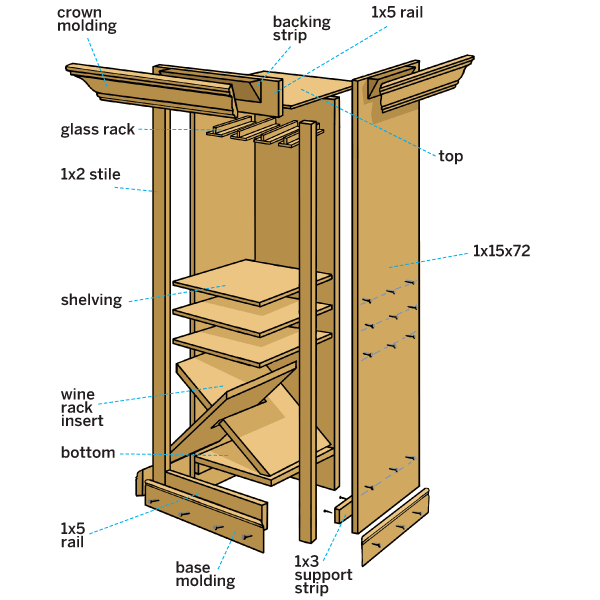
CUT LIST TO BUILD A COCKTAIL HUTCH
- Two 1-by-15 box sides, 72 inches
- Four 1-by-15 shelves, 18 inches
- Two 1-by-15 wine rack insert pieces, 26 1/2 inches (measured between the long points of their 45-degree beveled ends)
- Two 1-by-3 support strips, 14 1/2 inches
- Two 1-by-2 stiles, 72 inches
- Two 1-by-5 rails, 16 1/2 inches
- Four 5/8-inch square dowels for the glass rack nailing strips, 15 inches
- Four 3/8 by 3-inch lattice strips for the glass rack, 15 inches
- Baseboard (custom miter three to size)
- Crown molding (custom miter three to size)
- Three 2-by-4 backing strips (custom rip and cut them to size)
- One 5mm lauan back, 72-by-19 1/4 inches
Step 2: Cut the Cocktail Hutch Frame and Shelves
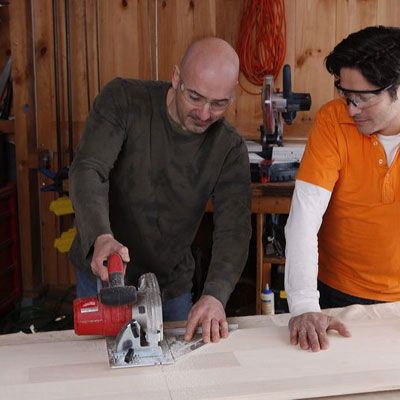
Measure and mark dimensions for the sides, top, and shelves of the hutch on the 1-by-15 panels. Using a rafter square as a guide, make the crosscuts with a circular saw. Then measure and mark the dimensions for the lauan back. Cut it to size using a straightedge, clamps, and a circular saw.
Step 3: Size the Pieces for the Glass Rack
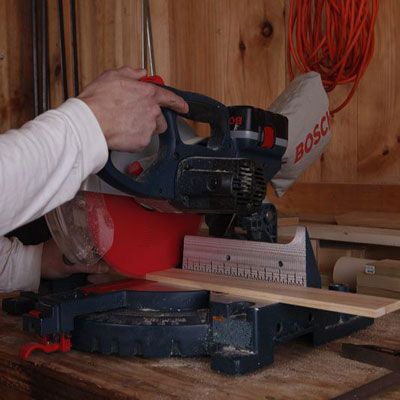
The glass rack is built from pieces of 5/8-inch square dowels and 3/8-inch lattice. Measure and mark the pieces, then cut them to length with a miter saw.
Step 4: Assemble the Racks
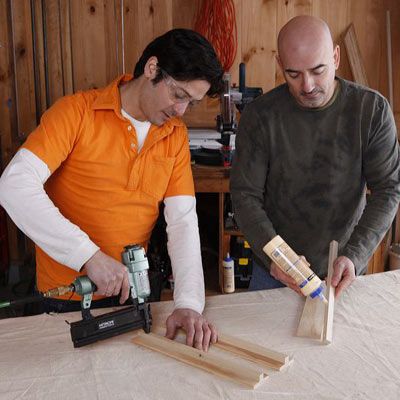
Draw a center line down the length of each lattice piece. Apply wood glue to one edge of each dowel and center the glued edge on the line. Use a pneumatic nailer to drive 5/8-inch brads through the dowels and into the lattice.
Step 5: Attach the Racks
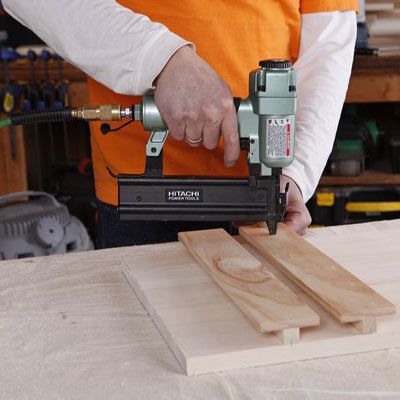
On the underside of the piece for the hutch top, measure 3/4 inch from either side. Draw four parallel lines evenly spaced between these borders. Apply glue to the dowels and center them on the lines. Using the nailer, drive 1 1/2-inch brads through the glass-rack assemblies and into the hutch top, as shown, to secure them.
Step 6: Install the Cleats To Assemble the Hutch
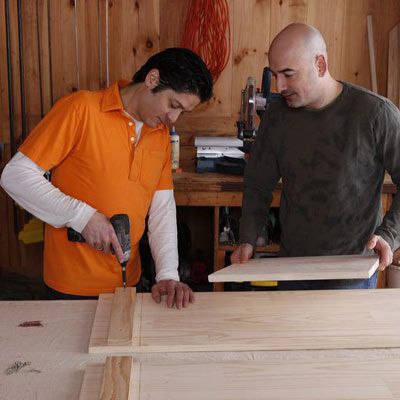
On a miter saw, cut two pieces of 1-by-3 in length for the cleats. Lay the two hutch sides on your work surface, interior up. Draw a line at 4 1/2 inches below the top edges to mark the bottom of the top shelf, then draw lines across both faces 3 3/4 inches up from the bottom edge. Apply glue to one side of the cleats and set them in place. Use a drill/driver and 1 1/2-inch drywall screws to secure the cleats, as shown.
Step 7: Build the Box for the Hutch

Apply glue to the side edges of the top piece (fitted with the glass rack) and the bottom shelf, and on top of the cleats, then sandwich the top and the bottom shelf between the sides at your lines. Use a pneumatic nailer to drive 1 1/2-inch nails through the sides and into the edges of the top and shelf. Nail through the bottom shelf and into the cleats. Use the nailer and 1 1/2-inch brads to attach the back at the edges of the hutch.
Step 8: Bevel the Parts for the Wine Rack
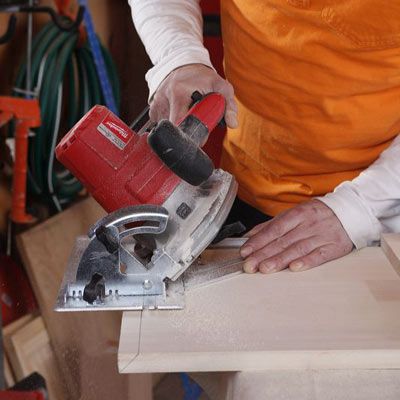
Clamp a rack piece with one end overhanging your work surface. Adjust the blade on your circular saw to 45 degrees and bevel the end, as shown. Reposition the piece and bevel the other end at an opposing angle. Repeat the process on the other piece.
Step 9: Lay Out the Notches for the Wine Rack

Place the first piece in the box diagonally, with the bevels flat against the bottom and the side. Hold the second piece perpendicular to the first, and mark the edges of both pieces where they cross. Set the depth on a combination square to 7 1/2 inches. Hold the square at each mark, and draw lines for a 3/4-inch-wide by 7 1/2-inch-long notch on each board, as shown; the notches will allow the boards to slip together in an x.
Step 10: Cut the Notches for the Wine Rack
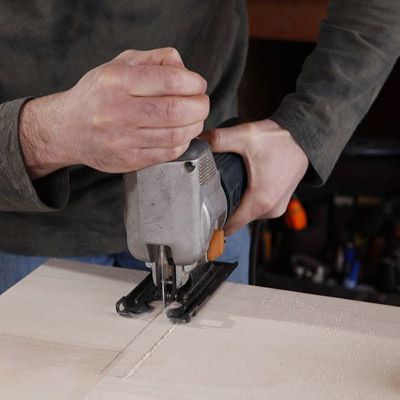
Clamp one of the pieces to your work surface, and use a jigsaw to cut to the end of the lines. To connect the lines at the top of the notch, use a 1/4-inch drill bit to make a hole at one corner. Then, slip the blade of your jigsaw into the hole and make the short 3/4-inch cut to complete the notch. Repeat the process on the other piece.
Step 11: Assemble the Pieces
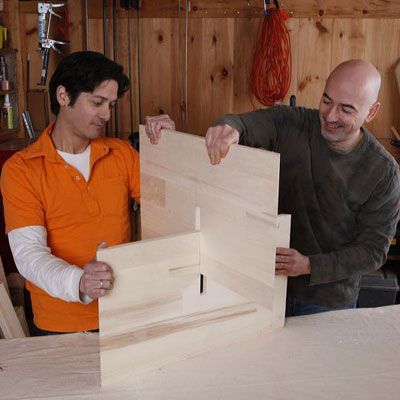
Slip the boards together at the notches. The bevels at the bottom should face down, and the ones at the top should face the sides.
Step 12: Secure the Rack and Shelves
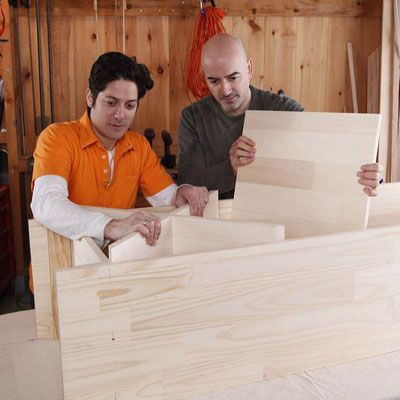
Set the wine rack insert in the hutch, and set a shelf above it. Nail through the sides of the box and into the edges of the shelf with 1 1/2-inch nails to secure it. Don’t nail into the wine rack insert—you want to allow for slight movement. Mark the location of the remaining shelves, and nail them in place.
Step 13: Attach the Rails and Stiles
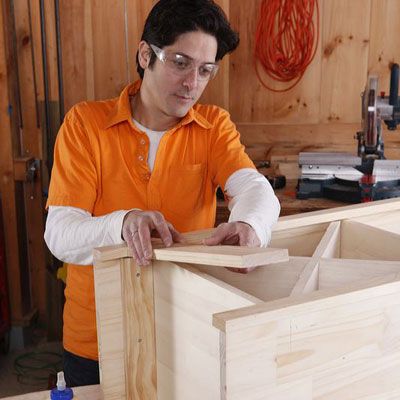
Measure and cut the 1-by-2 and two 1-by-5 face-frame pieces to length on your miter saw. Apply glue to the front edges of the hutch. Set the 1-by-5 rails at the top and bottom, concealing the lip of the glass rack and bottom shelf, respectively. Set the 1-by-2 stiles flat on the glued edges, flush with the sides of the hutch. Nail through the glued pieces and into the hutch edges with 1 1/2-inch brads.
Step 14: Install the Baseboard Molding
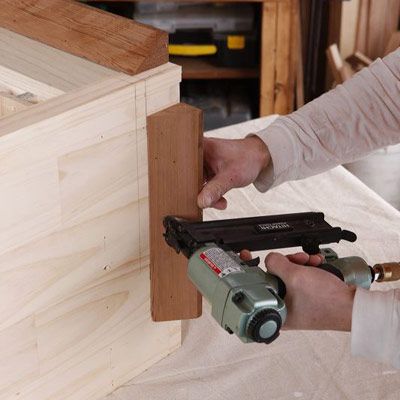
On your miter saw, bevel both ends of the front strip of molding. Bevel the front ends of the side pieces but straight-cut their back ends. Apply glue to the back of each piece and nail them in place flush with the bottom edge of the hutch’s sides.
Step 15: Install the Backing Strips for the Crown Molding
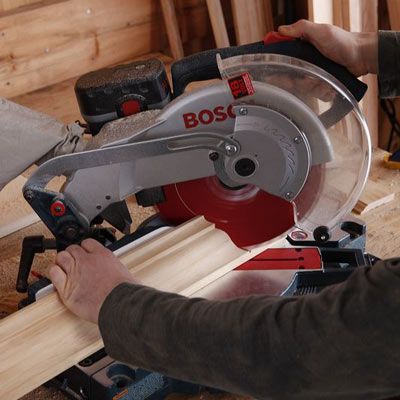
Clamp a 2-by-4 to your work surface and rip the angle of the backing strips with a circular saw. Cut them to length. Temporarily cap the hutch with a scrap board overhanging one side. Hold a piece of crown with its bevels flush against the cap and the hutch, and mark along its bottom edge. Transfer the line around the hutch. Position the backing strips enough above the line to account for the crown’s bevel, and nail them in place with 1 1/2-inch brads.
Step 16: Miter-Cut the Crown Molding
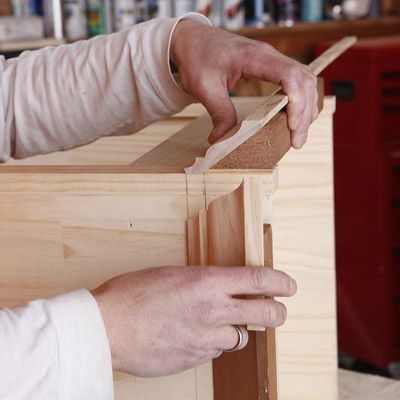
Using a miter saw, cut the crown molding to length. Hold the mitered pieces in place on the box to dry-fit the joints, then straight-cut the back end of each side piece to length.
Step 17: Attach the Crown Molding
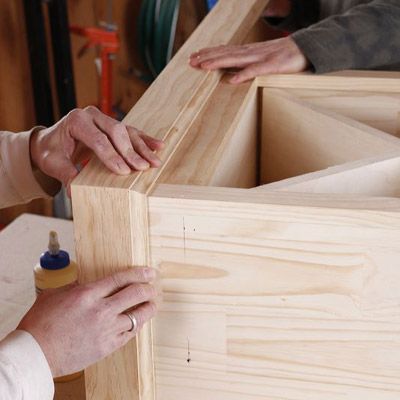
Set each piece of crown molding on your marked lines. Nail through the molding and into the backing strip using 1 1/2-inch brads. Fill all the nail holes and joints with wood filler, and sand the spots smooth. For the finish, we used an interior latex paint with a satin finish in a color that mimics the rich look of stain to give the piece a formal look appropriate for a living room.










